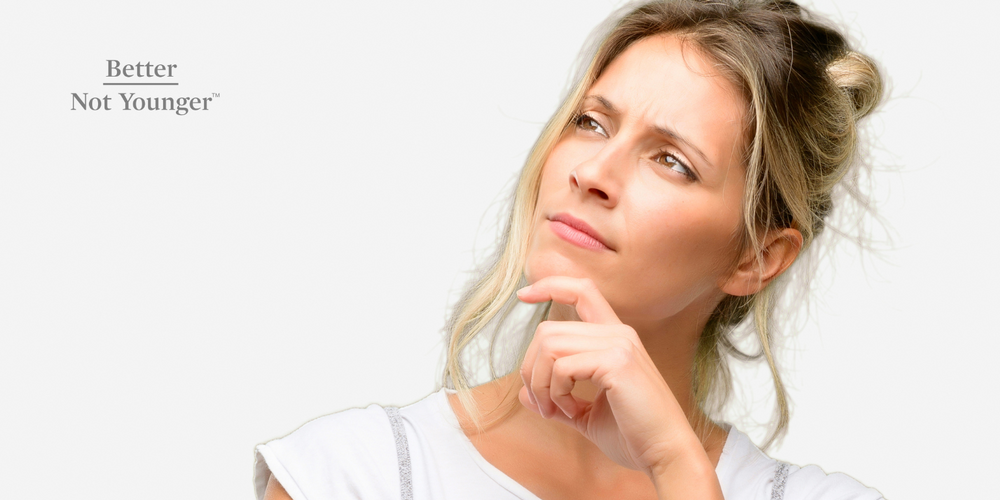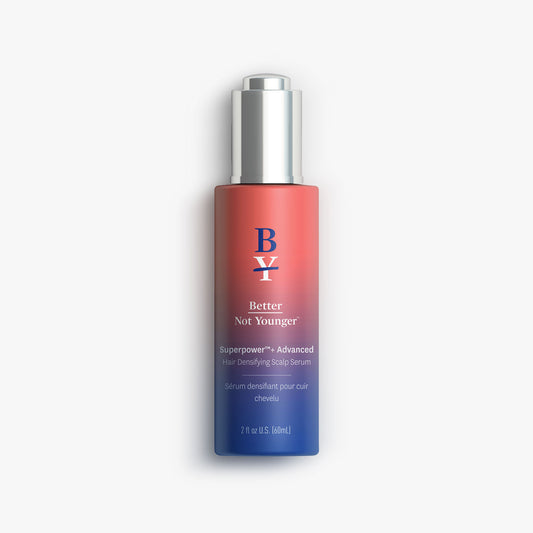The Difference Between Hair Shedding and Hair Loss

We often hear hair loss and hair shedding used interchangeably, but there is a difference between hair shedding and hair loss.
Hair shedding is a normal part of the hair growth cycle as the hair released from the bulb sheds and is replaced by new hair growth. Hair shedding occurs during the final phase of our natural hair growth cycle while our follicles prepare for the start of the new cycle. There are times when hair shedding may seem pronounced, and this may be an instance of seasonal hair shedding—but this, too, is normal and temporary.
Hair loss occurs when the natural hair growth cycle is disrupted (by something external or internal), and hair strands shed prematurely or grow back more slowly. At the far end of this spectrum is when hair growth stops completely, and follicles no longer produce new hair strands. In cases of excessive shedding that leads to hair loss, healthy hair growth won’t resume until the cause of the hair loss stops or until treatment occurs.
Keep reading to learn more about your natural hair growth cycle, how much hair shedding is expected, and how to fight excess hair shedding and loss.
What Are the Stages of the Hair Growth Cycle?
Over its lifetime, each hair strand cycles through four stages: anagen, catagen, telogen, and exogen phases. Here's what happens during each of these phases:
The anagen phase is the growth phase where our hair follicles are most active. New hair strands appear during this phase, and our existing hair in the anagen phase continues growing longer. Approximately 90% of our hair is in the anagen phase at any given time.
The catagen phase is a short, transitional phase. During this phase, hair growth slows, and hair strands separate from the base of the follicles, readying themselves for the telogen phase.
The telogen phase is the resting phase of our hair cycle. We don't lose strands during this cycle, but they no longer grow.
The exogen phase is, sometimes, lumped in with the telogen phase, but the exogen phase (or the hair-shedding phase of the hair growth cycle) is the one that's most frustrating because this phase is when we physically shed the strands that are at the end of their life cycle. Many variables factor into how excessive our hair falls during the exogen phase.
How Much Hair Shedding Is Normal?
It’s perfectly natural to lose between 50 to 100 hair strands per day as part of your body's natural hair-shedding cycle, and losing 50 to 100 hairs looks far different for long locks than it does for short!
But noticing more hair in your brush doesn't necessarily mean you're dealing with dead hair follicles—many types of hair loss can be reversed, and it’s important to know that many factors like stress, poor nutrition, and harsh styling techniques can influence your hair loss.
This is why it’s essential to determine the cause of your increased hair fall. Knowing the cause of your hair loss, and whether it’s stress-related or hormone imbalance, will help you take the proper steps toward addressing it—and consulting your doctor can help, especially if your hair thinning feels sudden or persists over time.
5 Reasons Hair Loss Happens—and How to Fight It
1. Significant All-over Shedding, Hairline Thinning, and a Wider Hair Part from Menopause
As we go through perimenopause and menopause, we experience decreased estrogen. Estrogen and progesterone levels drop in menopause, allowing more significant androgenic activity. This hormone imbalance can lead to hair loss, known as androgenetic alopecia or female pattern hair loss. With androgenetic alopecia in midlife, our hair follicles shrink and produce thinner strands. These narrower strands can cause wider hair parts and thinning hair at the top of the head and hairline.
For thinning due to menopause, try a scalp serum formulated explicitly for noticeable hair thinning, like our new Superpower™+ Advanced Hair Densifying Scalp Serum. It contains hair-nourishing and scalp-soothing ingredients like rosemary extract, apple cider vinegar, and our gentle yet extra-potent Superpower™ blend to refuel hair that’s experiencing significant shedding for thicker-, denser- and stronger-looking hair over time!
Bonus: This supercharged serum is a terrific option for noticeable hair thinning beyond menopause-related thinning.
2. Excess Hair Shedding Following a Period of Major Stress
Stress impacts every aspect of our health, from sleep quality to digestion to immune function. It makes sense that dealing with stress can also affect our hair! If you've been under a lot of stress at work or recently dealt with a stressful life event like a divorce or a major surgery, you may be experiencing an increase in hair shedding, resulting in hair loss.
To help stress-related hair loss, it's essential to support your body and focus on self-care as you recover from the stress. Getting enough sleep, practicing relaxation techniques, exercising, and eating well are all great ways to help your recovery. You can also try a supplement to support healthy hair, like our Significant Other Hair, Skin & Nails Supplement. It has essential nutrients like vitamin A, biotin, and folic acid to support stronger- and healthier-looking hair, skin, and nails!
Since we also recommend our Superpower™+ Advanced Hair Densifying Scalp Serum for stress-related hair loss, try applying it nightly using the Superpower™+ Advanced Comfort Liquid Comb.
This applicator’s smooth silicone bristles help evenly distribute the serum at your roots while delivering a soothing yet stimulating scalp massage that you’ll love for some stress relief.
3. Hairline Thinning from Harsh Hairstyling
If you're noticing top-of-head hair thinning primarily focused near your hairline, this could be a sign of traction alopecia, hair loss due to friction. Tight hairstyles, vigorous hair brushing, and extensions can all cause traction alopecia. Extensive, ongoing damage can result in dead hair follicles, but this hair loss can be fully reversible if caught in time.
To fight back against this hair loss, avoid over-brushing your hair and wearing tight updos like ponytails and buns. Instead, opt for low, loose hairstyles that take tension away from the front and sides of your head. Check out our 17 heatless, low-tension hairstyling ideas for chic style inspo!
4. Increased Hair Shedding After Giving Birth
We adore the glowing skin and thick, healthy hair many enjoy during pregnancy! But we don't love it when we shed a lot of that gorgeous hair after giving birth. Shifting hormones are likely the culprit if you've given birth in the last year and now have increased hair shedding and hair loss that appears as diffuse all-over shedding or even patchy bald spots.
The good news is that this excess hair shedding is temporary! Though postpartum hair fall peaks around four months after birth, it should taper off by the baby's 1st birthday.
To give your hair greater volume after pregnancy, try adding a hair-thickening product like our award-winning Lift Me Up Hair Thickener. This lightweight spray wraps around thinning hair strands, lifting hair at the root and nourishing the scalp and follicles for instant volume!
5. Excess Hair Fall from Taking Medication
According to the American Academy of Dermatology, many prescription medicines can cause hair loss as a side effect. If you noticed that signs of hair loss began when you started a new medication, it's worth talking to your doctor about your concerns. They might suggest an alternative medicine with less impact on your hair or refer you to a dermatologist to help with your hair loss.
Remember: You should never stop or start taking medications without talking to your physician first!
Better Not Younger has haircare products to combat excess hair shedding and pump up the volume on thin tresses! Let Better Not Younger help you fight excess hair shedding and loss and achieve your healthiest, lushest hair yet!


